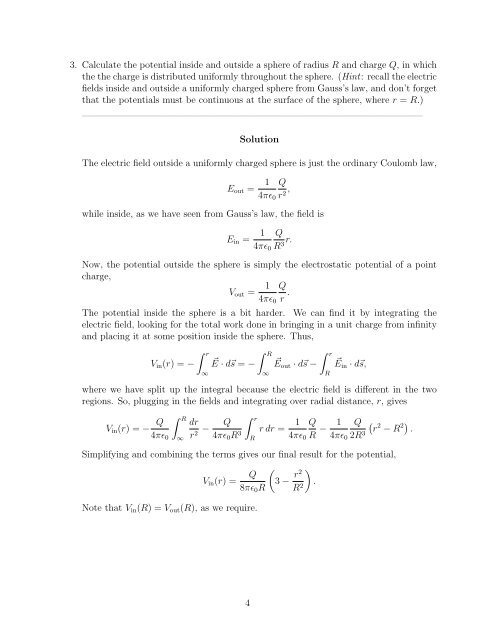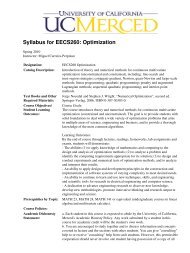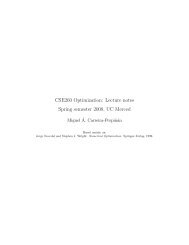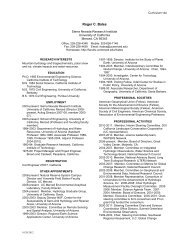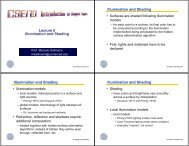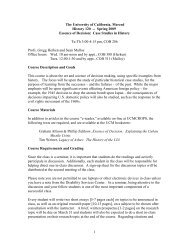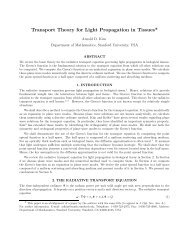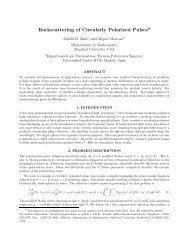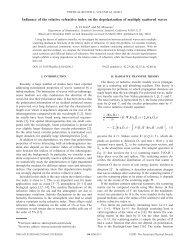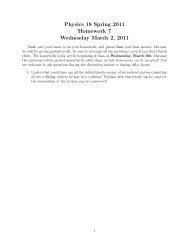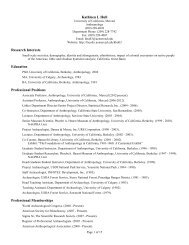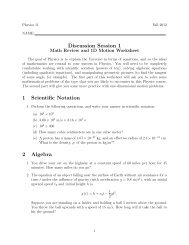Physics 9 Fall 2011 Homework 4 - Solutions Friday September 16 ...
Physics 9 Fall 2011 Homework 4 - Solutions Friday September 16 ...
Physics 9 Fall 2011 Homework 4 - Solutions Friday September 16 ...
Create successful ePaper yourself
Turn your PDF publications into a flip-book with our unique Google optimized e-Paper software.
3. Calculate the potential inside and outside a sphere of radius R and charge Q, in which<br />
the the charge is distributed uniformly throughout the sphere. (Hint: recall the electric<br />
fields inside and outside a uniformly charged sphere from Gauss’s law, and don’t forget<br />
that the potentials must be continuous at the surface of the sphere, where r = R.)<br />
————————————————————————————————————<br />
Solution<br />
The electric field outside a uniformly charged sphere is just the ordinary Coulomb law,<br />
Eout = 1<br />
4πɛ0<br />
Q<br />
,<br />
r2 while inside, as we have seen from Gauss’s law, the field is<br />
Ein = 1<br />
4πɛ0<br />
Q<br />
r.<br />
R3 Now, the potential outside the sphere is simply the electrostatic potential of a point<br />
charge,<br />
Vout = 1 Q<br />
4πɛ0 r .<br />
The potential inside the sphere is a bit harder. We can find it by integrating the<br />
electric field, looking for the total work done in bringing in a unit charge from infinity<br />
and placing it at some position inside the sphere. Thus,<br />
r<br />
Vin(r) = −<br />
∞<br />
R r<br />
E · ds = − Eout · ds −<br />
∞<br />
R<br />
Ein · ds,<br />
where we have split up the integral because the electric field is different in the two<br />
regions. So, plugging in the fields and integrating over radial distance, r, gives<br />
Vin(r) = − Q<br />
4πɛ0<br />
R<br />
∞<br />
dr Q<br />
−<br />
r2 4πɛ0R3 r<br />
r dr =<br />
R<br />
1 Q 1<br />
−<br />
4πɛ0 R 4πɛ0<br />
Q<br />
2R3 2 2<br />
r − R .<br />
Simplifying and combining the terms gives our final result for the potential,<br />
Vin(r) = Q<br />
8πɛ0R<br />
Note that Vin(R) = Vout(R), as we require.<br />
4<br />
<br />
3 − r2<br />
R 2<br />
<br />
.


